Preface:
Most of my maternal ancestors, those from my mother, emigrated from Germany around the mid-century 1800s and missed the great migration of American settlers who crossed over the Allegheny Mountains after the American Revolutionary War. However, one set of my ancestors highlighted in yellow below on the maternal side were those pioneers of the mid-west and they founded great cities like Cincinnati and Miamisburg, Ohio. This is the branch of my ancestry tree I will follow in this book; my mother, grandmother, great-grandmother, 2nd great-grandmother and so on following my mother side of the family. Highlighted in yellow are the ancestors and their families we will be reading about in my ancestry tree.

Figure 1 – Tom Pearson’s maternal ancestors highlighted for 10 generations and 300 years.
Chapter 1
Alice Moore (b1700 d?)
Thomas Moore (b1692 d1751)
Generation 10
Alice Moore (b1700) and her husband Thomas Moore (b1692) were born in Northern Ireland in the Ulster province. After their marriage in 1717, they both emigrated from Antrim, Ireland to Philadelphia, Pennsylvania which was a British American Colony at the time and the largest city in America. There are records of their ancestors living in Antrim, Ireland at the beginning of the 1600s. Today, Moore last name is one of the most common surnames in Ireland.
Why did Alice and Thomas Moore immigrate to Colonial America? The first wave of Irish Immigration started in 1715 consisting of Ulster Presbyterians. Most of these immigrants went to Philadelphia, Baltimore and Charleston. They were escaping discrimination that the English/Irish laws imposed on Presbyterians and Roman Catholics alike. They were also fleeing a succession of poor harvest, droughts, escalating rents and tithe payments demanded by the Anglican Church in Ireland. Alice and Thomas Moore were part of this first wave of Northern Ireland immigrants to America.
Presbyterians in Ulster
Alice and Thomas’ parents or grandparents likely immigrated to Northern Ireland from Scotland or England in the early 1600s with the Protestant movement. In the early 1600s Ireland was in a state of transition and it was no more apparent than in Ulster region in Northern Ireland. There was an influx of settlers from England and Scotland which transformed the character of the province.
Accompanying these settlements in Ulster was the introduction of Protestantism in the form of Presbyterians. Several ministers came to Ulster, Ireland from Scotland in this period. There was hostility towards Presbyterianism in Scotland that facilitated their move to the Ulster providence. In the beginning Presbyterianism principles were tolerated within the Church of Ireland and there was no separate Presbyterian denomination at this time.
In the 1630s the Irish government took steps to bring the Church of Ireland into closer conformity with the Church of England. As a result of these measures, those who were not prepared to renounce their Presbyterianism were excommunicated. The Irish government insisted that all Scots in Ulster over the age of sixteen take an oath renouncing Presbyterianism. This had a deeply destabilizing effect on the province with many settlers withdrawing to Scotland to avoid taking the oath. However, the Presbyterian Church continued to grow and in the 1650s many more ministers from Scotland moved to the north of Ireland.
In 1704 the Test Act was introduced in Ireland which required those holding public office to produce a certificate stating that they had received communion in the Anglican church. This effectively disbarred Presbyterians from participation in local government. The levers of power sat firmly in the hands of an Anglican Elite, and with other restrictions still in force, Presbyterians continued to feel estranged from the state.
Immigration really kicked off when the Massachusetts governor agreed to allocate free land in the American colony for Ulster settlers in 1718. The governor provided land grants for Ulster settlers to help reinforce their frontier against the Native Americans.
This was the opportunity that Alice and Thomas Moore saw in America, and they took it in 1718 sailing to Philadelphia, Pennsylvania becoming themselves American frontier pioneers. By 1725 they had a daughter Mary Moore born near Philadelphia.
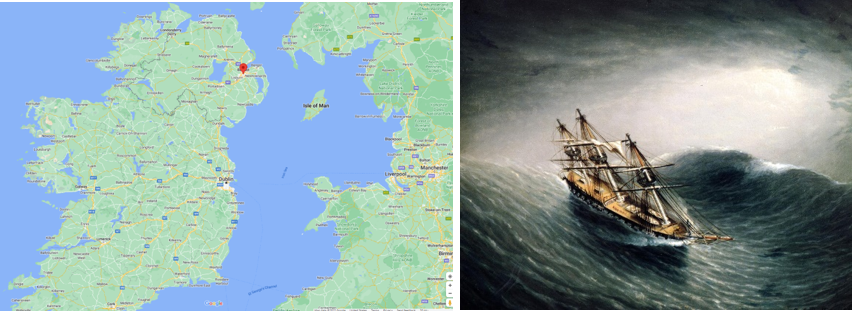
Figure 2 – Antrim, Ireland located at the red dot with Belfast it’s largest city. A stormy crossing in the Atlantic.
This may now may the time to explore my mother’s DNA and where Ancestry.com says that her ancestors came from.
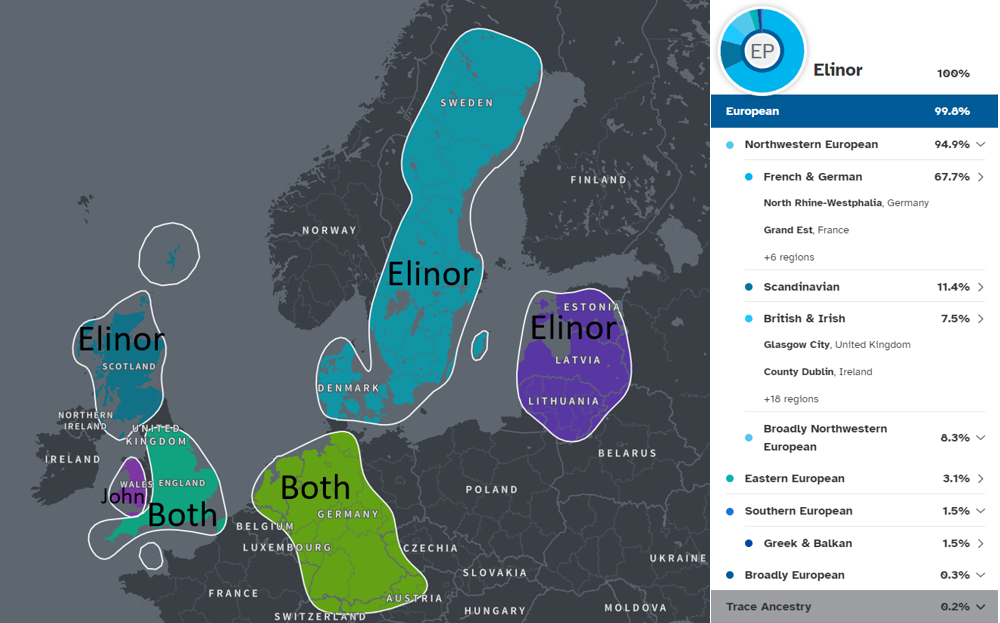
Figure 3 – Locations where my Mother, Elinor and my father John ancestors originated from
The map shows that my Wasson/Teeter great-grandparents emigrated from the different regions in Ireland, England and Scotland.
As stated in the preface about ¾ of my mother’s DNA came from ancestors who I have records of them emigrating direct from Germany in the mid-1800s to the Ohio Valley area. This aligns with the 67.7% German/French DNA discovered by DNA tests. However, ¼ of my mother’s DNA are not from German descent. They came across the Appalachian Mountains after the American Revolutionary War and from other countries. The ancestors that did this were my Great-grandparents that is my mother’s maternal branch that extends to the David Wasson and Amanda Teeter Wasson’s ancestors which are maternal great-grandparents. If I follow their ancestry tree, I find David Wasson’s great-grandparent that emigrated great England
Chapter 2
Mary Moore (b1725 d1800)
James Delay (b1726 d1753)
Generation 9
Mary Moore’s parents emigrated from Northern Ireland, and she was born near Philadelphia, Pennsylvania. James Delay, her husband, emigrated from Bourgogne, France to Augusta County, Virginia when he was 14 years old. They were married in May 1747 near Philadelphia, Pennsylvania in British Colonial America. Shortly after their marriage they moved west to today’s Hampshire County 40 miles northwest of today’s city of Winchester, Virginia to farm and raise their family. Before the American Revolutionary War this was the western front of the British Colonies and much of it was disputed between the French and British. James and Mary settled on this disputed land before the French/Indian War began with the British and American Colonists.
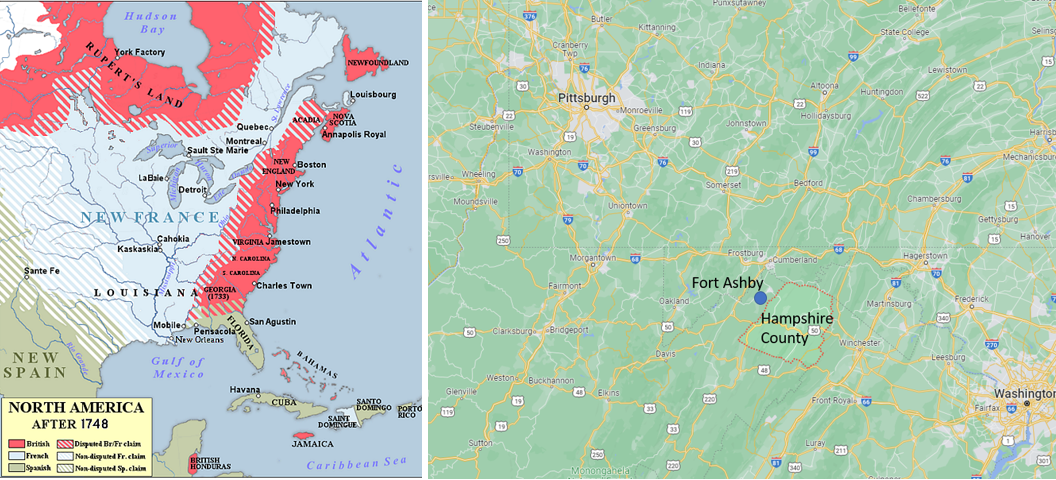
Figure 3: James Delay and Mary Moore Delay settled on disputed lands in Hampshire County, Virginia next to Fort Ashby before the French Indian War started.
Life on the American Frontier in the mountains of the Appalachians.
A wave of Europeans brought their families to the frontier and attempted to establish homesteads. They built cabins and cleared the land. The log cabin filled a need for secure shelter, and a heavily timbered wilderness offered ready material for cabin, barn and outbuildings, used by the pioneer and the settler. These cabins could be very crude, with no windows and a hole in the roof to vent smoke. They were often constructed of unhewn (round) logs. The spaces between the logs filled with smaller log rails and chalked with available material like moss or straw coated with mud. A fireplace and chimney might utilize all stone construction or only stones lined the firebox area while the upper chimney was made of logs, fillings and mud. Farming, full-time or partial, was essential to frontier life. With agriculture grew a need for flour milling and grist mills became indispensable for a growing community.
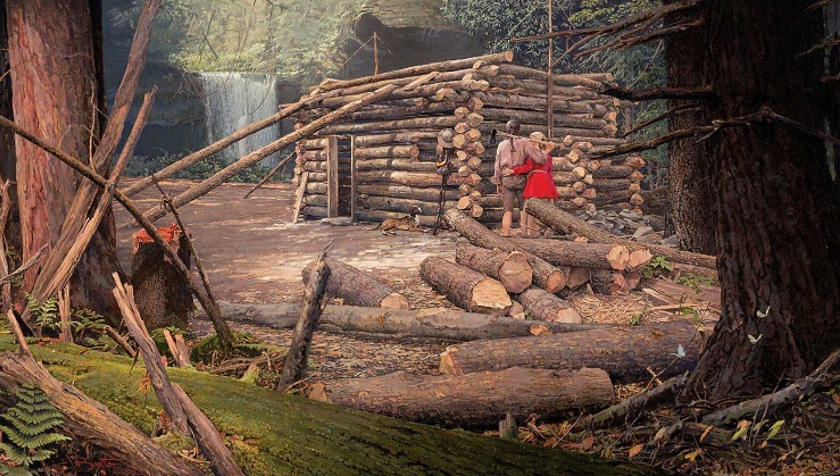
Waterpower for turning these was a determining factor in the location and development of future towns and cities like Winchester, Virginia. James and Mary Delay were part of this American dream.
In the 1740s and 1750s, there was other reasons why James and Mary Moore Delay dared to settle several days wagon ride beyond the Virginia frontier line. Despite the dangers and isolation, the ridges and valleys along the south branch of the Potomac river offered good soils for cultivation and pasturage with forested hills offering game animals.
Huguenots immigration to America
James Delay was born in hills of Bourgogne, France. It is 200 miles southeast of Paris and 75 miles west of Geneva, Switzerland. The Delays appeared to be French Protestants, Huguenots, who were officially persecuted in the following century around 1685. The French government gave them two simple choices: convert to Catholicism or die. Emigrating was illegal, but Switzerland was nearby. As a boy of 14 years old, James Delay may have chosen this route to safety and eventually ended up in the American colonies traveling by ship from Great Britain to at their own expense. He did not make the trip with his parents as they are buried in France. Records in Virginia shows that he and his brother Jesse immigrated with David Edmiston’s family in July 1740 to Virginia’s western frontier near today’s Lynchburg, VA. Seven years later he married Mary Moore,
James Delay died early at around age 27 but not before he and Mary had 6 children. It is likely he died in the French/Indian war skirmishes that was plaguing the region. Being on the western American frontier in Virginia put James and Mary in the middle of the conflict. Mary Moore Delay gave birth to Hannah Delay a couple of years before James’ early death. After James’ death Mary likely remarried however records recording this event and her death are currently not available.
Incidents leading up to the French/Indian War, 1753-1754
In the early 1750s, France’s expansion into the Ohio River valley up the Mississippi river repeatedly brought it into conflict the claims of the British colonies, especially the Virginia colony. In 1754, the French built Fort Duquesne where the Allegheny and Monongahela Rivers joined to form the Ohio River (in today’s Pittsburgh), making it a strategically important French stronghold that the British repeatedly attacked.
During 1754 and 1755, the French won a string of victories, defeating the young George Washington Throughout this period, the British military effort was hampered by lack of interest at home, rivalries among the American colonies and France’s greater success in winning the support of the Indians.
In 1755, Colonel George Washington gave orders to build a stockade and fort (Fort Ashby) on the eastern side of Patterson Creek. This was for the western defense of Hampshire county where James Delay and his family lived on the south branch of the Potomac river.
In 1756 the British formally declared war with the French in America, but their new commander in America, Lord Loudoun, faced the same problems as his predecessors and met with little success against the French and their Indian allies.
The tide turned in 1757 because William Pitt, the new British leader, saw the colonial conflicts as the key to building a vast British empire. Borrowing heavily to finance the war, he paid Prussia to fight in Europe and he reimbursed the colonies for raising troops in North America.
The French/Indian War ended with the signing of the Treaty of Paris in February 1763. The British received Canada from France and Florida from Spain. The arrangement strengthened the American colonies significantly by removing their European rivals to the north and south and opening the Mississippi Valley to westward expansion.
Chapter 3
Zachariah Hole (b1752 d1822)
Hannah Delay Hole (b1752 d1817)
Generation 8
Hannah Delay Hole was born in 1752 to James Delay and Mary Moore Delay on the frontier edge of the American colonies in Virginia. Hannah’s father James died a couple of years after she was born on the northern Virginia frontier around 1752. It’s not clear how her father died, however there were heavy raids in the area during the French/Indian War that depopulated the region. Hannah Delay married Zachariah Hole in 1774 at age of 22. They lived on the northern Virginia frontier for years until in 1789 they moved down the Ohio river to an outpost called Losantiville station which is now Cincinnati, Ohio. Hannah and Zachariah along with 10 other families were the first settlers in Losantiville Station that today is called Cincinnati. Hannah Delay Hole, her husband Zachariah Hole and his brothers erected an outpost civilization in 1789 that is located today just behind right field of the Cincinnati baseball stadium.
Revolutionary War
The Revolutionary war of 1775-1783 was 3 years going when Zachariah took up arms against the British in 1778. Zachariah was married to Hannah 4 years earlier and they had one daughter and were living on the American frontier on the south branch of the Potomac river about 40 miles northwest of today’s Winchester, Virginia. At that time the Appalachian Mountains were the border of the American colonies and as far west as civilization expanded. Going west any further, pioneers could be attacked by Native Americans who were defending their hunting grounds.
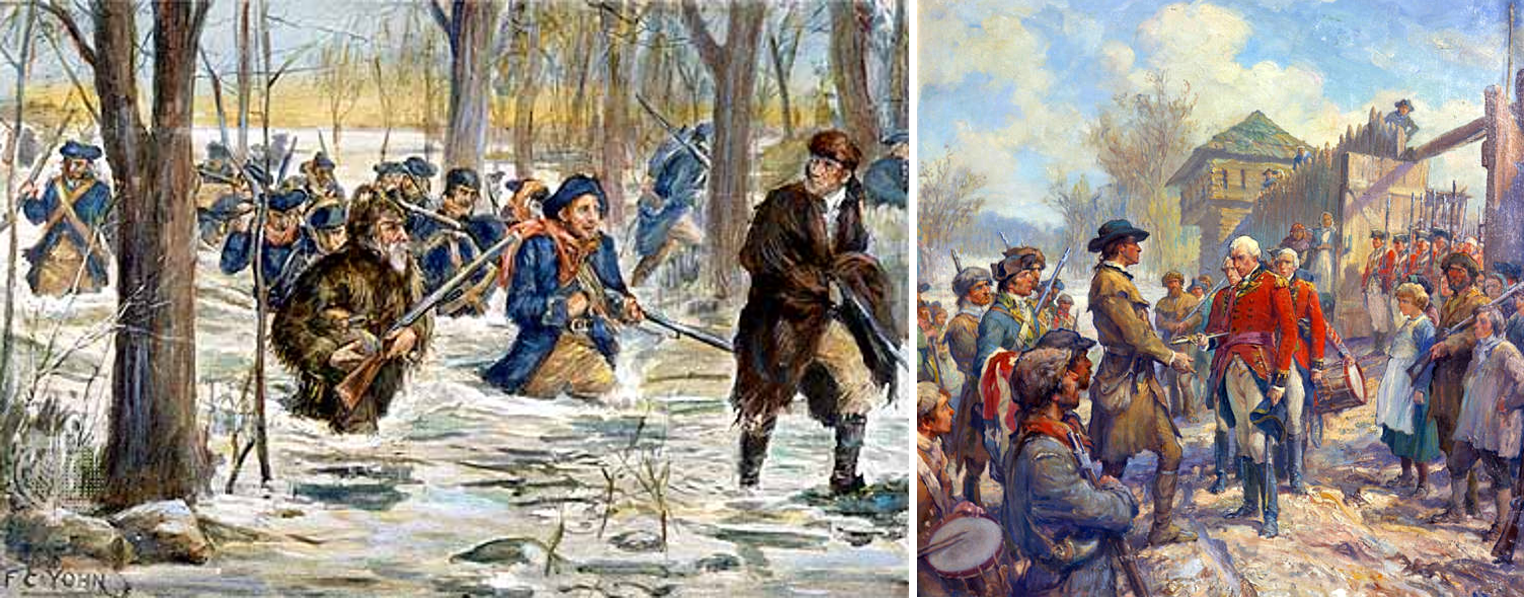
Figure 4: Clarks men through waist high water in the winter on march to Vincennes, Indiana. Clark accepts surrender of a British commander.
How did Zachariah Hole join the American Revolution? Zachariah’s father emigrated from England and his mother was born in Virginia. He was raised with his brothers on the American frontier. In December 1777, George Rogers Clark presented a plan to Virginia's Governor Patrick Henry, and asked for permission to lead a secret expedition to capture the British-held villages at Kaskaskia, Cahokia, and Vincennes in the Illinois country. His idea was to force the British out of the Ohio and Illinois county by secretly attacking poorly supported British outposts. The Governor commissioned Clark as a lieutenant colonel in the Virginia militia and authorized him to raise troops for the expedition. He and his officers recruited volunteers from Pennsylvania, Virginia, and North Carolina and prepared for the expedition at Redstone, a settlement on the Monongahela River south of Fort Pitt (today’s Pittsburg), 40 miles, on February 1, 1778. Zachariah Hole was one of these men who gathered there to fight the British. Clark’s regiment departed on May 12, 1778, proceeding on boats down the Monongahela to Fort Pitt (Pittsburg) to take on supplies and then down the Ohio to Fort Henry (Wheeling, WV) and on to Fort Randolph (Henderson, WV) at the mouth of the Kanawha. They reached the Falls of the Ohio (Louisville, KY) in early June where they spent about a month along the Ohio River preparing for their secret mission.
In July 1778, Clark led the Illinois Regiment of the Virginia militia of about 175 men including Zachariah Hole, crossed the Ohio River at Fort Massac and marched to Kaskaskia (just south of St. Louis), capturing it on the night of July 4 without firing their weapons. The next day, Captain Joseph Bowman and his company captured Cahokia in a similar fashion without firing a shot. The garrison at Vincennes along the Wabash River surrendered to Clark in August. Several other villages and British forts were subsequently captured, after British hopes of local support failed to materialize.
Westward Pioneers
When the Revolutionary War (1775-1783) was over, the undeveloped Ohio country was now US territory. Like many veterans of the war, Virginian Zachariah Hole brought his family over the mountains into the wilderness north of Kentucky. Zachariah knew the Ohio river from his adventure as a soldier in the revolutionary war when Clark and his men went down the Ohio River and up the Mississippi River towards St. Louis.
By Jan 1789, the founders of Cincinnati had completed their surveys and plot maps. Among the first few families to buy their land was that of Zachariah and Hannah Hole with their first five children. Along with the families of Zachariah's brothers Daniel, John, and William, the Hole clan made up a large part of Cincinnati's civilian population in 1789. On the site of the parking lot for the Great American Ball Park, they pooled their resources, labor, and land to construct Losantiville Station among the hardwood forests along the banks of the Ohio River. A station was a wooden stockade built to house several families until it was safe to go out and establish individual homesteads. At the same time, on a hill a few hundred yards away, the new US government was building Fort Washington, a major regional army base on the Ohio River. While the British had withdrawn from the Ohio Valley after the Revolution, they were still encouraging Indian raids on settlers and outposts throughout the Ohio country. Braves under Chief Blue Jacket of the Shawnee and Chief Little Turtle of the Miami tribe were concerned about the future of their hunting grounds. Until the victory at the Battle of Fallen Timbers in 1794 and the Treaty of Greenville in 1795, it was unsafe for individual families to settle far from the forts.
Founding Miamisburg, Ohio
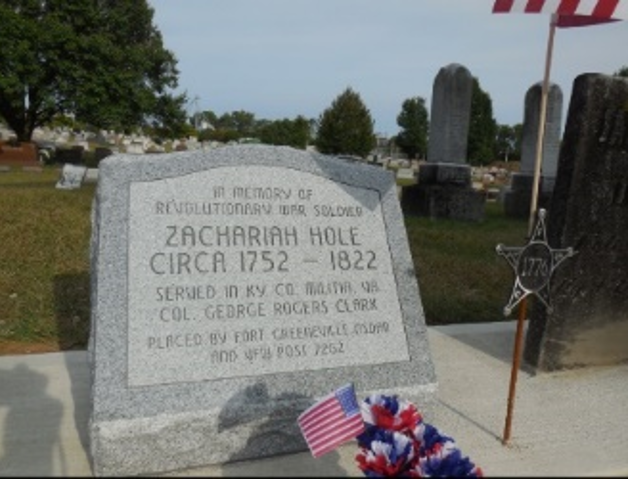
In 1797, Zachariah and Hannahhad left the protection of Fort Washington to go up the Miami River and establish Hole's Station on the future site of Miamisburg, Ohio. The origins of Miamisburg reach back 220 years to a fledgling community called Hole’s Station. The village was originally named after Zachariah Hole, who moved from Losantiville station, Ohio with his family in 1797. Hole built a stockade to live in, fearing harm from Indians. The Indians proved to be friendly, and more settlers joined them. Today there is a memorial at Zachariah gravesite for being a Revolutionary war solder at the Greenlawn Cemetery in Versailles, Ohio.
Miamisburg Wikipedia History
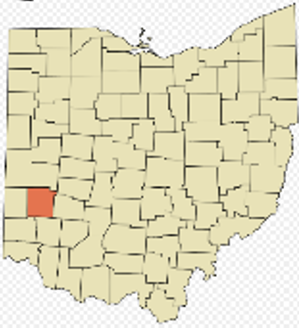
European-Americans started calling their first community "Hole's Station" circa 1797, when Zechariah Hole settled there with his family from Virginia and built a stockade on the west bank of the Miami River opposite the mouth of Bear Creek. The stockade attracted squatters, surveying parties, and other settlers who had taken grants to live in the local cabins until they could build their own; hence the little community became known as "Hole's Station". Settlers came west primarily from Pennsylvania. By 1822, the unincorporated community had become a village; it achieved city status in the 1920s.
Chapter 4
Hannah M Hole (b1798 d1853)
James Robinette Brandon (b1792 d1876)
Generation 7
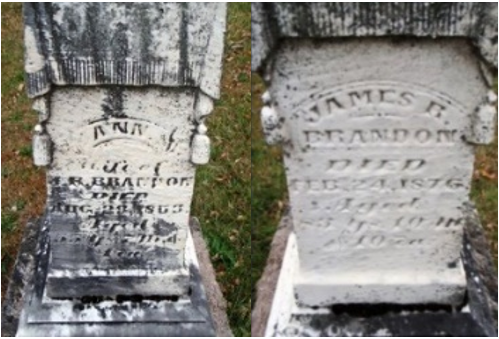
Hannah M Hole was born in 1798 in Miamisburg, Ohio just a year after her family established “Hole Station “and may have been the first person born in what is today’s Miamisburg, Ohio. Her husband James Brandon was born in West Virginia. James came to Dark County, Ohio in 1818 with his sister and married Hannah in 1818 when she was 19. They had six children, one of them being Mariahborn in 1833. On May 4th, 1820, James Brandon bought 160 acres of virgin land one mile north of Versailles, Ohio from President James Monroe, in Cincinnati office. They lived on and farmed this land most of their lives. Hanna was 55 and James 83 when they died. Hanna and James gravesite is at the Hillgrove Cemetery near Union City, Ohio.
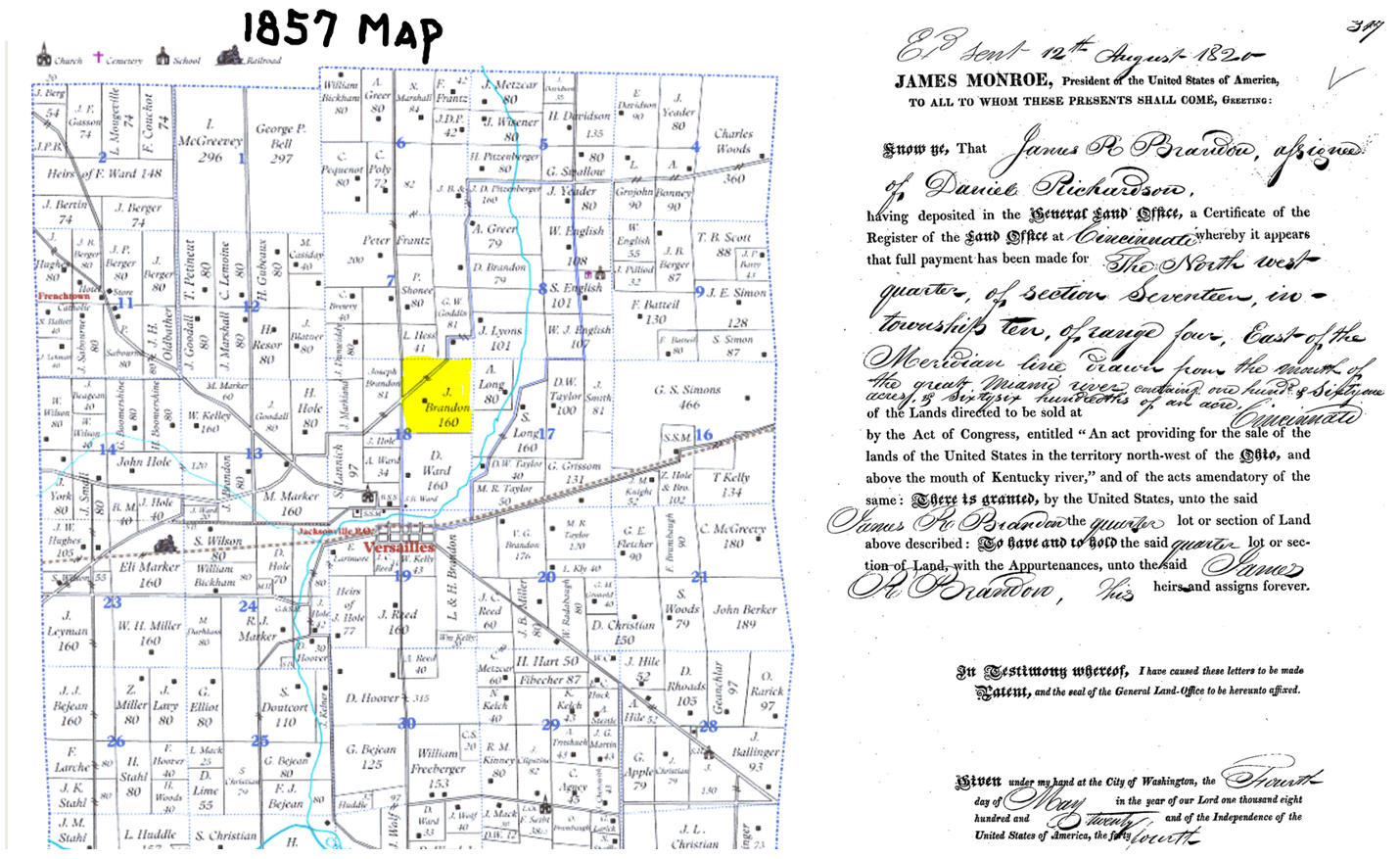
Figure 5: James Brandon farm in this 1857 map. Land contract purchased by James Brandon from US government.
Chapter 5
Mariah Brandon (b1833 d1910)
John Paul Teeter (b1830 d1891)
Generation 6
Mariah Brandon was born near Union City, Ohio. She married John Teeter in 1852 when she was 18 and lived in the area as farmers all her life. Her first child of nine children was born in 1856. Amanda Catherine Teeter was born in 1858 in Randolph county, Indiana near Winchester, Indiana and is the 4thchild. John Paul Teeter registered for the Civil War Draft in 1863 and gave his age as 36 instead of 33 to avoid serving in the Union Army. He and Mariah continued to farm in Wayne township in Randolph County near Winchester, Indiana during the Civil War.
Chapter 6
Amanda Teeter (b1858 d1939)
David Wasson III (b1859 d1891)
Generation 5
Amanda Teeter was married to David Wasson in 1878 when she was 19 years old near Union City, Indiana. The 1880 census list him as a farmer in Dark county, Ohio however he soon moved to Richmond, Indiana and work as a teamster hauling loads with horse and buggy. Please read Tom E. Pearson Great-Grandparents life stories – Published April 2022to find out more about Amanda and her children and grandchildren listed below.
Chapter 7
Grace Wasson (b1885 d1925)
Ernest Hofheinz (b1877 d1948)
Generation 4
Please read Tom E. Pearson Great-Grandparents life stories – Published April 2022 to find out more about Grace Wasson and Ernest Hofheinz.
Chapter 8
Edith C Hofheinz (b1907-d1949)
Walter C Erk (b1907 d 1957)
Generation 3
Please read Tom E. Pearson Great-Grandparents life stories – Published April 2022 to find out more about Edith Hofheinz and Walter Erk.
Chapter 9
Elinor Jean Erk (b1932 d2019)
John Pearson (b1932 d2012)
Generation 2
Please read Tom E. Pearson Great-Grandparents life stories – Published April 2022 to find out more about Elinor Erk and John Pearson.
Chapter 10
Tom Pearson (1963)
Rita Montez (b1960)
Generation 1
When Tom E. Pearson was born on March 12, 1963, in Richmond, Indiana, his father, John and his mother, Elinor, was 30. He married Rita Montez Pearson on November 7, 1992, in Spring, Texas. Tom and Rita have two children.
When Rita Montez Pearson was born on June 21, 1960, her father, Martin, was 29, and her mother, Rosa, was 23. She has two older sisters.
Tom Pearson is the youngest of four sons of Elinor and John Pearson. In Tom’s childhood he loved to play basketball and often played at the Whitewater School outside courts. He went on to play throughout his high school years. After he graduated from Northeastern High school, Tom attended ITT Technical Institute and studied Electronics and Automated Manufacturing. He earned an associate degree in Electronics Engineering Technology in Dayton, Ohio and a bachelor’s degree in Automated Manufacturing Technology in Indianapolis, Indiana.
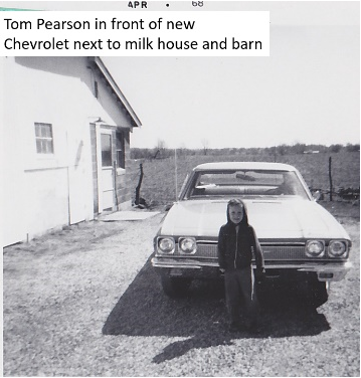
After college, he moved to Shreveport, Louisiana and worked at AT&T phone manufacturing company for 5 years. There he troubleshooted and repaired telephone testing and manufacturing equipment and played softball in his spare time. Then he moved to Houston, Texas and two years later met his wife Rita Montez on a company ski trip to Winter Park, Colorado. Tom worked in Houston at Compaq Computers for six years as a Manufacturing Engineer developing advanced automated placement equipment for computer board manufacturing before moving to Oregon with his wife. He worked in Oregon for Intel Corporation for 19 years then changed jobs and became the Director of Engineering for HP in Vancouver, Washington.
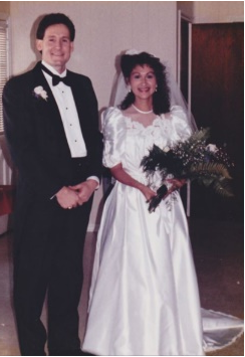
Tom married Rita Montez in Houston, Texas at the age of 29 and they traveled to Australia and New Zealand on their honeymoon. In New Zealand, Rita and Tom loved the beauty of the rolling green hills, snowcapped mountains, and rugged shorelines of South Island New Zealand and wanted to live and raise a family in such a place. Tom and Rita made that dream happen three years later when they moved to Portland, Oregon. Tom worked at Intel Corporation as a Technology Development Engineer and raised his family in the Northwest United States. At Intel, Tom was an engineer and prolific inventor with 30 patents on various products, technology, and manufacturing processes. In 2015, Tom worked for Hewlett Packard as Director of Engineering for Wearables and the Internet of Things. Tom and Rita Pearson have two children, Tristan, and Selena, and still lives in Oregon.
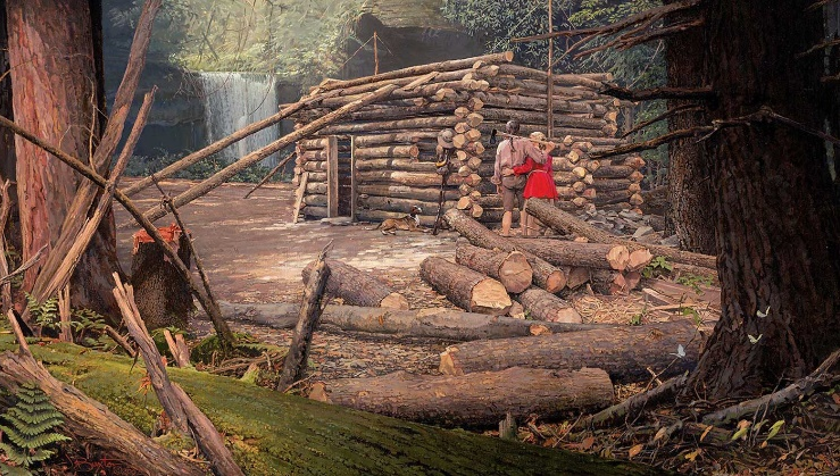
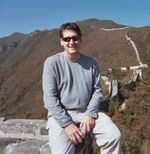
Member discussion: